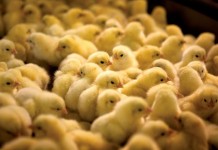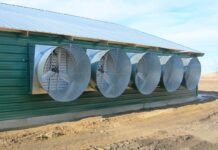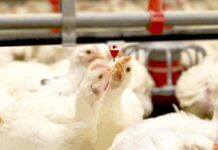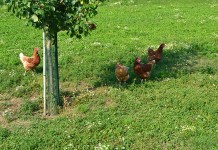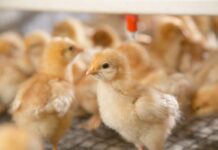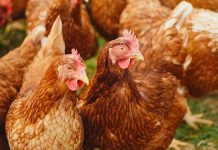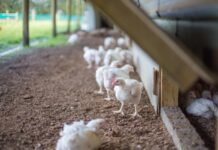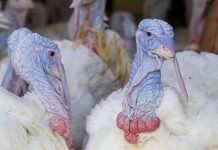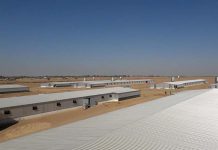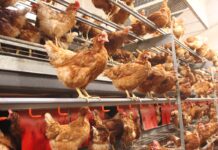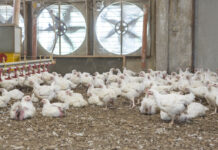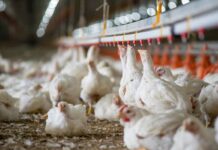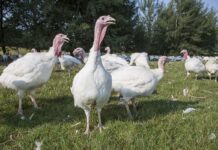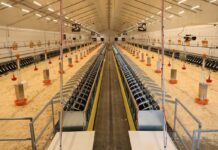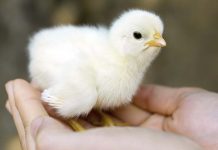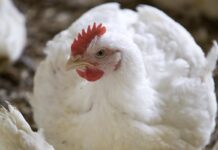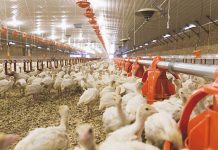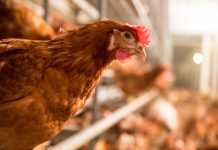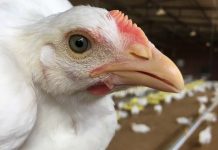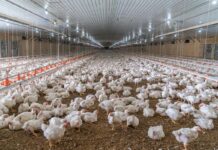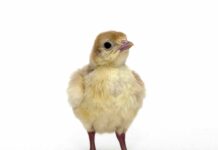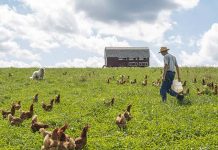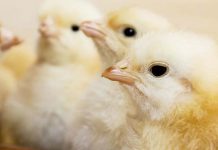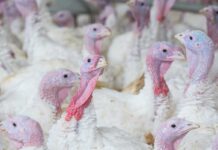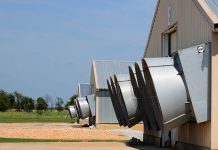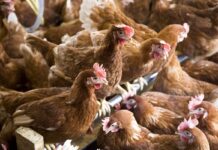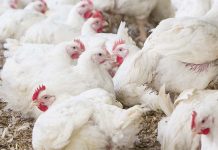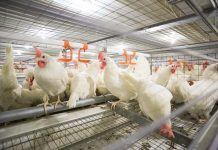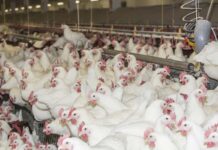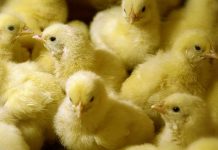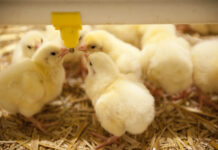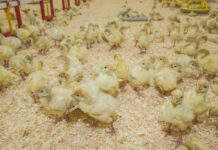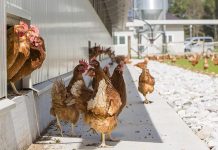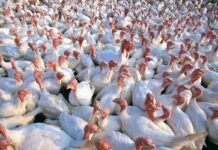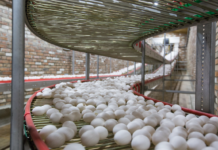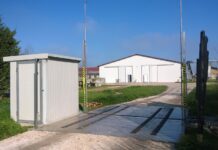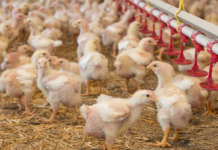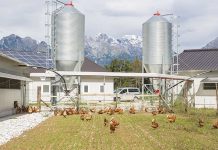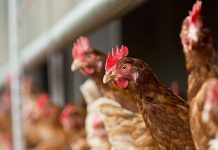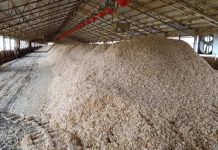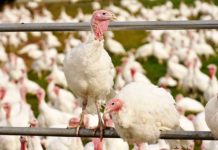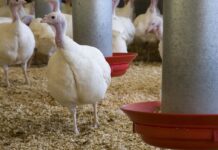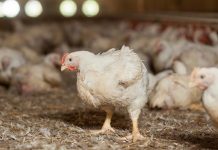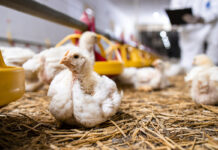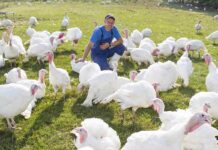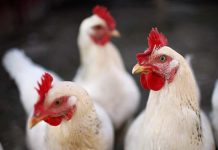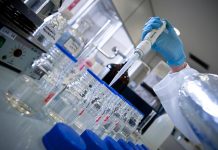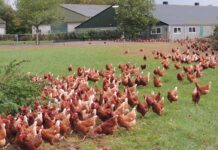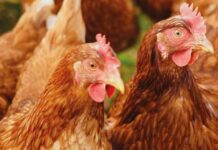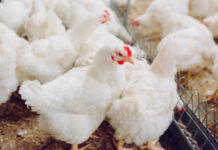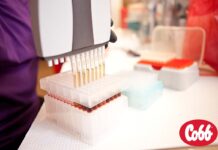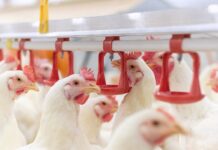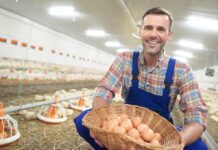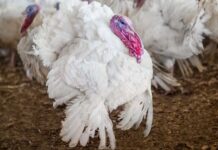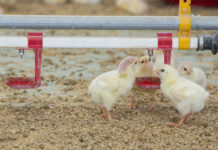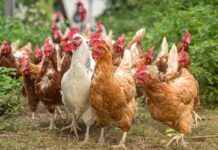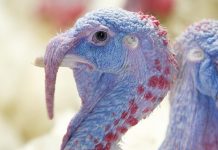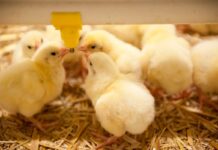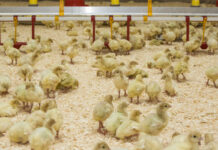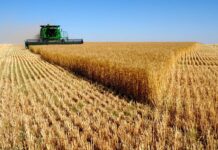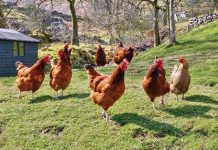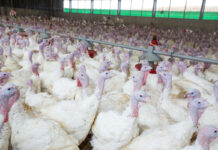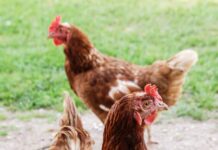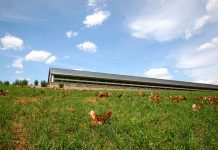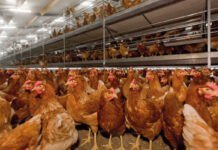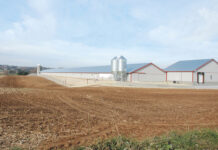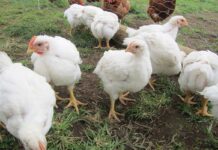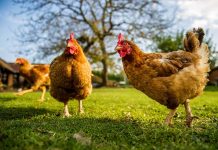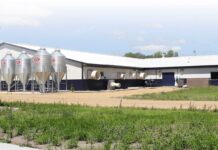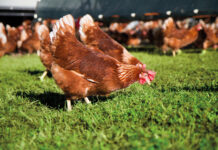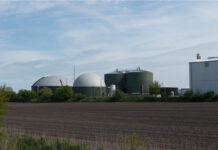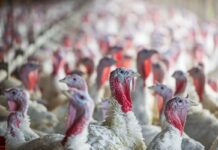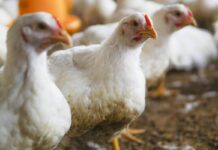A practical approach to broiler breeder management in the absence of beak treatment –...
In the absence of beak treatment management strategies, which ensure appropriate bird development and growth and the provision of adequate environment and stimuli, which...
Variable speed tunnel fans
Since October 2017, a study has been underway to examine the use of variable-speed tunnel fans to reduce fan operating cost. The study is...
Effect of ammonia on the immune response to infectious bronchitis virus vaccination
Commercial broilers in the grow-out stage are commonly exposed to ammonia which can have an effect on infectious bronchitis virus vaccination.
Ammonia concentrations are...
Best practice in management
How management best practice can help support profitability on broiler farms
In partnership with Cobb, this new series of articles will examine best practice in...
The effect of on-range insect feeding on range usage of free range laying hens
In Australia, on-range feeding of free-range laying hens can be frequently observed and is especially common in mobile sheds. While the biosecurity risk of...
The importance of monitoring chicks water usage
Getting chicks off to a good start is very important to overall flock performance. At no time does a bird grow faster than during...
Sentinel Birds: An old strategy that can enhance current diagnostic tools
The use of sentinel birds such as specific-pathogen-free (SPF) leghorns has been used extensively to learn about local presence of pathogens in farms, either...
Economics of broiler production systems in the Netherlands
In 2017, farmers of conventional, slower growing and biological broiler strains had similar incomes. The so-called ‘middle segment’ systems, the Dutch Retail Broiler (DRB)...
Minnesota Turkey launches 3rd “day in the life of a turkey farmer” video
Minnesota turkey grower Loren Brey of Brey Farms, New Ulm, Minn., was recently featured in “A Day in the Life of a Turkey Farmer”...
Hot weather management
Hot weather can have a detrimental effect on flock performance and in extreme cases cause heat loss. While you cannot control outside weather conditions,...
Perches: environmental enrichment or mechanical challenge?
The study compared the impact of wire ramps and perches on meat chicken mobility and the incidence of detached femoral caps (DFC), which can...
Identification of broiler poultry house dust components using chemical and physical analysis
Dust found in poultry housing is a complex substance most likely comprised of a mixture of excreta, feather, feed and bedding material.
M. Ahaduzzaman, L....
Navigating an antibiotic-free and reduced antibiotic use poultry industry
Antibiotics are a type of antimicrobial medication used to treat infections caused by bacteria. In the 1930s, a sulfonamide was the first commercially available...
Effects of feed presentation on growth performance and gut health of turkeys
The combined effect of feed presentation parameters bears considerable implications for the digestive health and growth performance of turkeys. This topic is very relevant...
Challenges and opportunities in establishing a new turkey parent stock operation in a remote...
The Russian turkey market has shown substantial growth during the last decade with new and very large companies willing and able to invest considerable...
In ovo injection of oregano essential oil at different pH affects hatchability and post-hatching...
The dynamic complexity of the developing embryo requires the maintenance of differentiated compartments with the capacity to maintain independent environments required to optimise their...
Maternal stress, the potential impact on broiler breeders and subsequent chick development
Managing stress in broiler breeders has been a continual topic of discussion since the early 1980’s, but our understanding of stress and its influence...
Higher stocking densities decrease performance without altering turkey meat quality
Quality of turkey meat is important but consumers are also concerned for the well-being of animals raised for meat production. However, some in the...
Using sensor technology against feather pecking in laying hens
In collaboration between Animal Breeding and Genomics (WUR), Breed4Food and the COST Action GroupHouseNet, a review paper was written on how sensor technologies can...
Roxell pan feeder system: the ultimate alternative to beak treatments
Jan Hoving from Zeewolde (NL) tested this Roxell solution at his rearing farm. For him, the decision to use Natural Beak Smoothing was a...
How preheating temperature can affect litter drying
One of the purposes of preheating a broiler house is to ensure the litter is properly dried prior to chick placement. Research has shown...
The future of brooding
It is essential that newly hatched poults are provided with the best possible starting conditions in brooding. This is a fundamental first step to...
Farmers’ perceived importance of biosecurity practices and actual performance on farm
It is prudent in today’s age that farmers uphold high-level compliance of biosecurity practices on Australian commercial chicken farms. This is especially so with...
Effects of corticosterone injection at embryonic day eleven on broiler growth and tonic immobility
Elevated corticosterone in ovo can have significant lasting impacts in avian species, including poultry. Stress in broiler breeder hens can lead to elevated corticosterone...
The impact of anthelmintic resistance in parasites of poultry
USPOULTRY and the USPOULTRY Foundation announced the completion of a funded research project at the University of Georgia in Athens, Georgia, in which researchers...
Effective ventilation key to Cobb500™ development
Effective ventilation plays a key role in the health and performance of broiler flocks. Nigel Strain, Cobb senior regional technical manager for Europe, the...
Improved fly control on poultry facilities with microbial products
Parasitoid wasps and the entomopathogenic fungi Beauveria bassiana were both examined to see if augmentative releases of the pathogenic organisms can help lower house...
Research shows practical method to reduce litter moisture
USPOULTRY and the USPOULTRY Foundation announce the completion of a funded research project at the University of Georgia in Athens, Georgia, in which researchers...
Impact of stress on feather cover of laying hens
Feather pecking is a behavior in which individual laying hens peck repetitively at the plumage of conspecifics, causing poor feather. Although FP can be...
Protein nutrition of breeders to improve production, hatchability and offspring performance – First Part
The last decades, poultry meat is becoming the most important protein sources in human diet and production is worldwide growing. Global poultry meat production...
Considerations for a better quality of chicks
During the incubation period, embryonic growth and development are affected by different factors, as breeder age, the incubation temperature and the availability of egg...
Controlling water temperature during brooding
Though there is a wide range of opinions on the optimal drinking water temperature for young chicks, the fact is farm managers actually have...
Researchers evaluate the effects of heat stress in poults
USPOULTRY and the USPOULTRY Foundation announced the completion of a funded research project at North Carolina State University in which researchers evaluated the effects...
Impact of layer alternative systems on management and production costs
The use of alternative systems in layer farming has increased in the commercial egg industry due to pressure arising from consumers concerns about hen...
Graded levels of stocking density for turkey toms raised to 16 weeks of age
Stocking density can be one of the most important drivers of economic return; however it can greatly influence bird performance, health, and welfare. In...
Pulsed ultraviolet light processing of eggs
In recent years, pulsed ultraviolet light has been shown to reduce microbial pathogens on the surface of shell eggs, crucial for maintaining good chick...
Biosecurity, the basics
By biosecurity we mean those measures aimed at reducing the risk of introducing and spreading infectious agents on farms, i.e. bio-exclusion and bio-containment measures.
Luigi...
Ammonia control during brooding begins when previous flock ends
The level of ammonia young chicks will be exposed to during the first week of their lives is determined to a large extent by...
Managing bird behaviour in organic production systems
This topic is presented on by John Brunnquell, the founder and current president of Egg Innovations, which is the largest exclusive producer of free...
Management techniques for a hot climate
Hot conditions significantly affect the performance of layers, particularly in temperatures higher than 30°C. Getting good technical results requires some adjustments in the management...
Methods for recovery and quantitation of viral nucleic acids from broiler litter
There is a well-recognised problem with both the supply of broiler litter material in some regions, and with the disposal of spent litter. This...
Enhancing turkey welfare one step at a time
Researchers of Wageningen Livestock Research have been able to define when a turkey takes a step. This is an important milestone to automating gait...
Targeted approaches to achieving good litter quality
Turkeys spend their life in close contact with litter material. The aim is to establish and maintain good, dry litter conditions and an environment...
Foodborne pathogens in poultry production
Foodborne pathogens continue as a considerable threat to public health. Intensification of livestock production, especially poultry, facilitates diseases transmission by increasing population size and...
Management of precise broiler production in farm level and technology usage
Farming broilers today has some very real challenges, namely birds are reaching their kill weights quicker, the profits from farming chicken are under pressure,...
How does your turkey grow?
Predicting how a turkey flock might grow under different nutritional and environmental conditions is a question of interest to everyone involved in turkey production...
Biosecurity practices and investments implemented by today’s poultry producers
One brick higher
The 2015 outbreak of highly pathogenic avian influenza (HPAI) virus devastated the United States poultry industry. A novel Eurasian-North American H5N2 was...
Cleaning and disinfection as strategic tools for avian production
Biosecurity, defined as all measures taken to prevent both the introduction and the spread of infectious agents on the farm, is of key importance...
Consequences of outdoor ranging on external and inter-nal health parameters of hens from different...
Free-range layer pullets are typically reared indoors within Australia, but adult layers go outdoors which might cause poorer adaptation due to the mismatch between...
Egg bacteriological study
Eggs from 10 commercial brands were selected in different types of housing: cage and on the floor (free of cage) obtained from 4 supermarket...
The effect of monochromatic photo-stimulation on growth and reproduction of broiler birds
Broilers in-ovo or with post hatch photo-stimulation with green light (GL) were heavier from dark incubated birds. Furthermore, we defined the cellular and molecular...
Biosecurity: protecting animal health to sustain the supply chain
Safeguarding animal health is of paramount importance to any country’s economy and food supply. Livestock with a clean health status is an important requirement...
The benefits of nipple drinker catch trays
USPOULTRY and the USPOULTRY Foundation announced the completion of a funded research project at the University of Georgia in Athens, Georgia, in which researchers...
Is no antibiotics ever (NAE) poultry production sustainable?
For many years, commercial poultry feeds in the United States contained sub-therapeutic levels of antibiotics, commonly known as antibiotic growth promoters (AGPs), to maximize...
Management best practices: small details can have the big-gest impact
Raising turkeys is equal parts science and art. It involves precise measurement of various factors throughout the life of the flock. It also requires...
Understanding and managing water for successful flocks
Water is the single greatest input into the production of poultry products such as eggs and meat. The fact water is a relatively inexpensive...
Management of ectoparasites in cage-free housing systems
As cage-free systems become more frequent in poultry production, we are forced to evaluate how pest control measures should adapt to ensure efficacy.
The...
Partially slotted flooring systems for market toms – What are the possibilities?
Avian influenza virus is stable longer in moist and cool conditions. Depending on seasonal and production conditions barn air and litter (bedding) moisture can...
Brooding
Getting chicks off to a good start is very important to overall flock performance. At no time does a bird grow faster than during...
Flip-overs: causes and solutions in brooding
The poult start is an extension of the hatching process. The whole process, including poult placement, is only as strong as its weakest link.
William...
Dietary xylanase improves growth performance and cost savings in broiler chickens fed a corn-soybean...
The increased demand to reduce production costs, as well as concerns about the environment, have resulted in pressure on poultry producers to increase dietary...
Spent hens: Can we improve their welfare?
The aim of this study was to observe the improvement in welfare indicators of spent hens kept in three different housing systems.
Sixteen Isa...
Diagnostic strategies for the control of avian Mycoplasmas
Mycoplasmas are bacteria without the cell wall which cause infections in poultry especially at respiratory and articular level.
They are the smallest single-celled organisms found...
Cost-effective biosecurity management practices
An effective flock health plan must integrate solid strategies for disease prevention, rapid diagnosis, and effective treatment to support poultry health. To attain this...
Researchers investigate how laying hens visually perceive the resources in cage-free housing
USPOULTRY and the USPOULTRY Foundation announced the completion of a funded research project at Purdue University in which researchers investigated how laying hens visually...
Animal breeding reduces environmental impacts
Results of a study show that breeding reduces environmental impacts of animal products by about 1% per year. This is achieved without specific selection...
The use of antibiotics in the poultry industry
Antimicrobial resistance in human and animal isolates in the E.U. remains a significant problem despite the bans of antibiotic growth promoters and the reductions...
Formulating layer diets beyond the least-cost model
Due to the high cost of feed for poultry, there is continuous pressure to formulate ‘least-cost’ diets that meet nutritional requirements. However, the main...
Impact of the lighting and feeding regimen during rearing on Hy-Line brown pullet growth...
The impact of two lighting and three feeding programs during rearing on pullet body weight (BW), feed intake (FI), organ characteristics and start of...
Balancing beetles with the bottom line
Darkling beetles, commonly referred to as litter beetles, are a widely encountered pest for those in the broiler production industry. Litter beetles are holometabolous...
Artificial structures mitigate simulated adverse pop-hole conditions
There is some evidence that commercial meat chickens prefer to access the range through ‘favoured’ pop-holes; however what makes pop-holes attractive or aversive is...
Backyard chickens
Are backyard chickens just a transient phenomenon? Current craze? Foodies’ desire for fresh eggs? Baby boomers or young families wanting to get closer to...
Back to basics: we need to concentrate on basic management skills
As we move to using less antibiotics in the production of poultry, many alternative products have been developed. While some are affective in specific...
What we do and don’t know related to cage free egg production research
During the early 2000s the pressure was on the U.S. egg industry to increase cage space and to transition from conventional cage systems to...
Turning Poultry Manure into Power: How Biogas Can Benefit Your Farm and the Climate
As the poultry sector looks for ways to improve sustainability and energy independence, biogas production from chicken manure is proving to be a practical...
Warm weather ventilation management
A poultry house ventilation system is arguably the most important management tool for a farm manager to use. As the birds grow and climates...
Waterline cleaning between broiler batches: a key to better bird health and performance
Clean water is essential for poultry—not just as a source of hydration but as a vital part of nutrition, digestion, and temperature regulation. In...
Reducing stress during broiler catching: a practical welfare package with real benefits
The catching phase in broiler production is one of the most critical—and stressful—moments for birds. How this process is managed can make a major...


